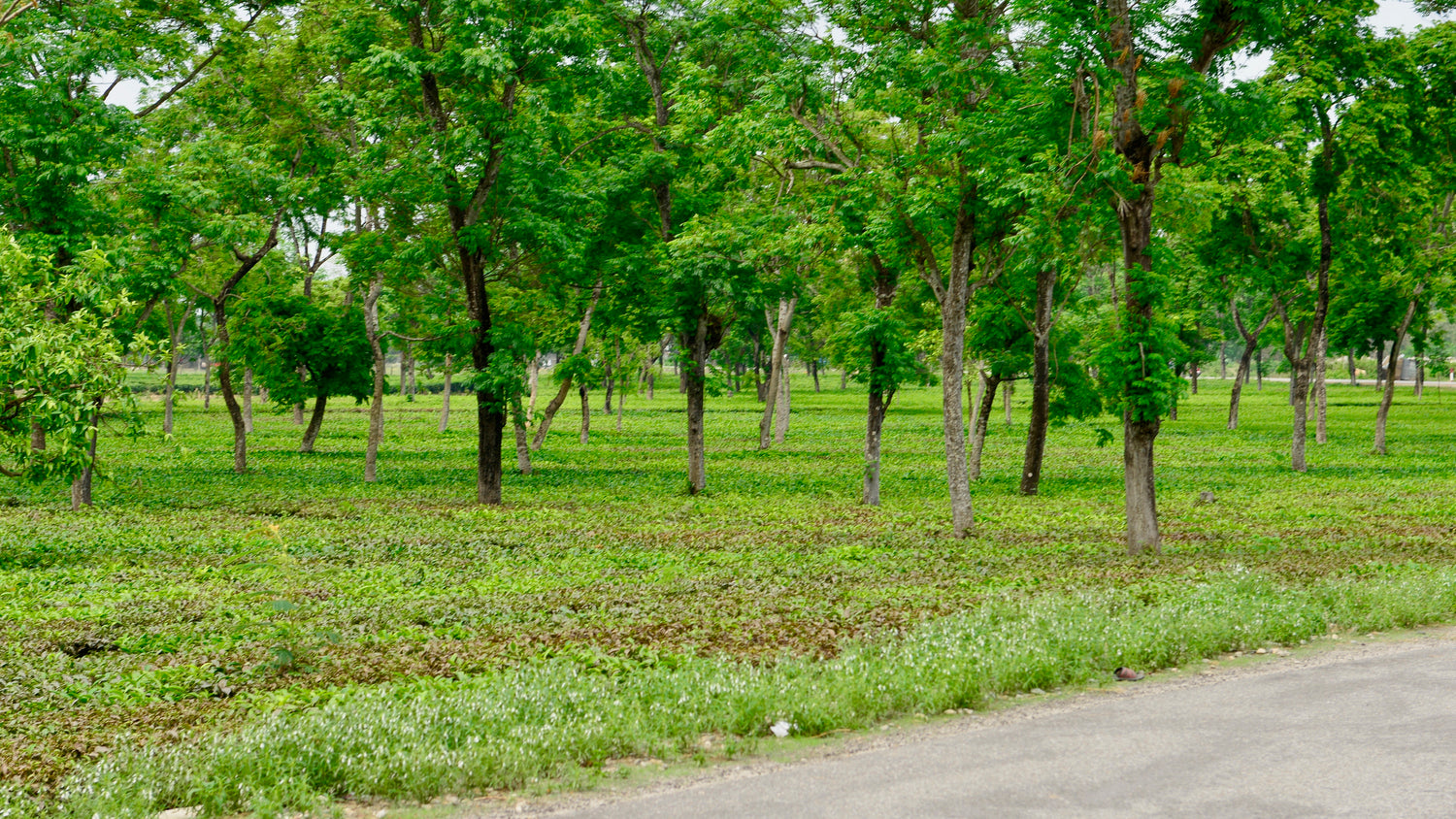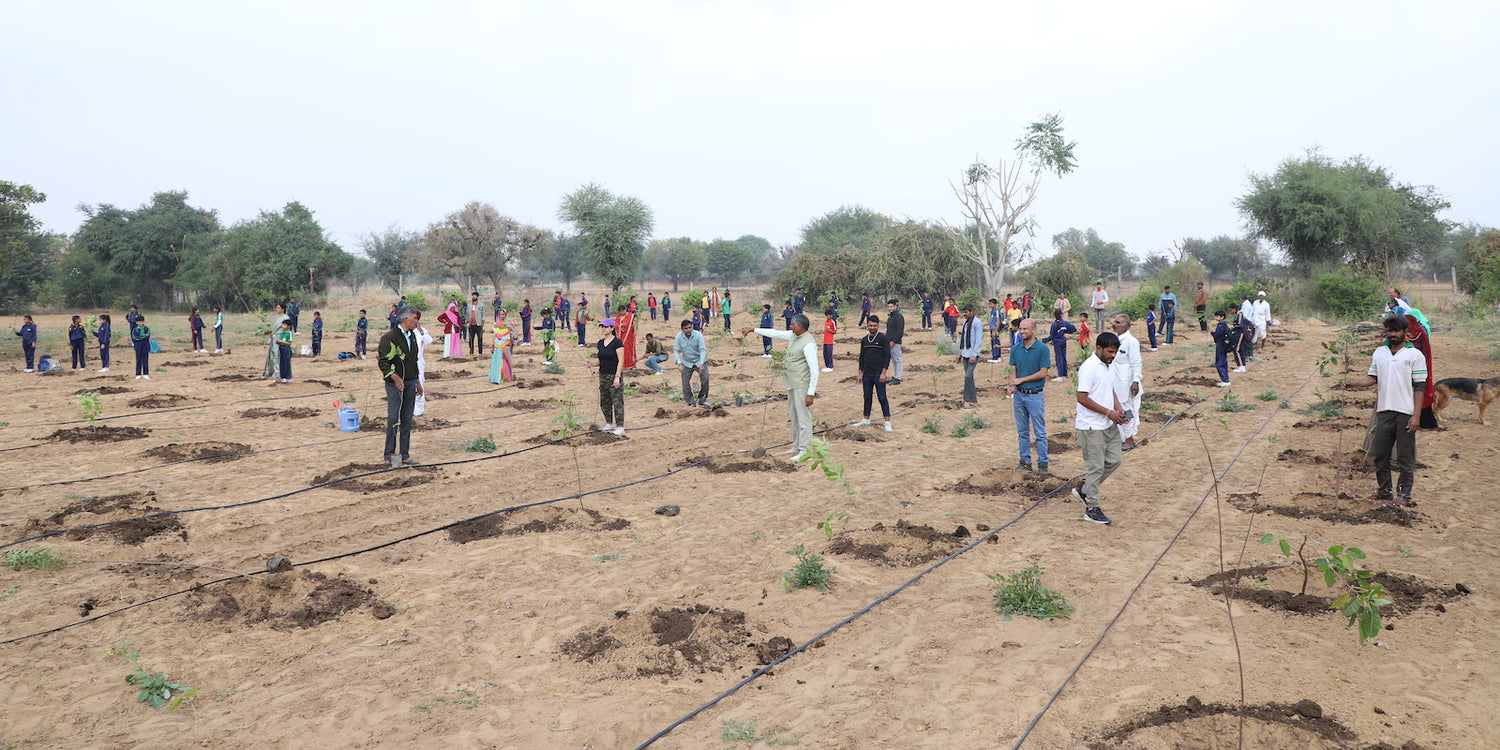Agroforestry in India: Bridging Agriculture and Sustainability
Agroforestry, a symbiotic land-use practice that combines agriculture and forestry, has become a crucial tool in India's fight against climate change Read more
Connect with us
-
👥 Corporates
If you are looking for:
- 🌲 Tree Plantation Events
- 📊 CSR Projects
📧 corporate@growbilliontrees.com
📞 +91 9699723523
💬 +91 9325931304 WhatsApp (Only)
🕒 Mon - Sat | 10am - 7pm IST
-
🧩 Tree Plantation NGOs
If you are looking for:
- 💰 Financial Assistance
- 🤝 Operational Support
📧 support@growbilliontrees.com
📞 +91 9699723523
💬 +91 9325931304 WhatsApp (Only)
🕒 Mon - Sat | 10am - 7pm IST
-
🌼 Individuals
If you are looking for:
- 👥 Group Tree Plantation Drive
- 🌳 Bulk Tree Plantation
📞 +91 9699723523
💬 +91 9325931304 WhatsApp (Only)
🕒 Mon - Sat | 10am - 7pm IST
Trending
Trees for Corporates
Agroforestry in India: Bridging Agriculture and Sustainability
Agroforestry, a symbiotic land-use practice that combines agriculture and forestry, has become a crucial tool in India's fight against climate change, rural poverty, and environmental degradation.
This holistic approach integrates trees and shrubs into farmlands, offering ecological, economic, and social benefits.
Agroforestry is more than just planting trees—it is a sustainable pathway toward improving agricultural productivity, enhancing biodiversity, and ensuring environmental resilience.
The Historical Roots of Agroforestry in India
Agroforestry is not a modern concept in India. It has been practiced for centuries in traditional farming systems, especially in tribal areas where communities integrated trees for fuel, fodder, and fruit into their agricultural activities.
Ancient texts like the Rigveda and Arthashastra document the significance of tree planting and forest conservation in Indian society.
The "Sacred Groves" culture, where specific tree clusters were preserved for religious and ecological purposes, showcases India's longstanding commitment to tree-based ecosystems.
However, with industrialization and monoculture farming, this sustainable tradition began to fade.
The resurgence of agroforestry in modern India owes much to environmental and agricultural policy reforms.
The National Agroforestry Policy of 2014, the first of its kind globally, marked a turning point, aiming to promote sustainable livelihoods, conserve biodiversity, and meet climate goals.
Agroforestry and Its Environmental Impact
1. Carbon Sequestration
Agroforestry systems serve as carbon sinks, capturing atmospheric CO2 and storing it in biomass and soil. Studies show that agroforestry practices in India can sequester approximately 25–50 tons of carbon per hectare over 20–30 years, mitigating the effects of global warming.
2. Soil Health
Tree roots prevent soil erosion, improve water infiltration, and enrich the soil with organic matter. Nitrogen-fixing trees like Acacia and Leucaena enhance soil fertility, reducing dependency on chemical fertilizers.
3. Water Conservation
Agroforestry practices reduce water runoff and increase groundwater recharge. Tree cover minimizes evaporation and improves microclimates, making agriculture more resilient to droughts.
4. Biodiversity Enhancement
Agroforestry farms often harbor diverse flora and fauna, offering habitats for pollinators, birds, and other species. This biodiversity not only sustains ecosystems but also boosts crop yields.
Economic and Social Benefits
1. Livelihood Diversification
Farmers practicing agroforestry can earn additional income from timber, fruits, medicinal plants, and non-timber forest products.
For example, farmers in Punjab and Haryana grow Poplar and Eucalyptus trees alongside crops to supply the paper and plywood industries.
2. Reduced Risks
Agroforestry reduces farmers' risks by diversifying income sources. During a crop failure, trees act as a financial safety net.
3. Women Empowerment
Women often engage in collecting and processing agroforestry products like fruits and medicinal plants, contributing to household income and fostering gender equity.
4. Climate Resilience
Agroforestry systems create microclimates that protect crops from extreme weather events, ensuring stable agricultural output.
Fun Facts About Agroforestry
-
Agroforestry Covers a Third of India's Farmland
Approximately 25 million hectares of farmland in India is under agroforestry, contributing significantly to the economy and environment. -
Moringa: The "Miracle Tree"
Widely grown in Indian agroforestry systems, Moringa provides high nutritional value and has applications in medicine, water purification, and biofuels. -
India’s Contribution to Global Timber Supply
Agroforestry contributes over 65% of India’s timber needs, reducing the pressure on natural forests. -
Fastest-Growing Agroforestry Systems
States like Uttar Pradesh, Haryana, and Punjab are leading in agroforestry practices, supported by government subsidies and corporate partnerships.
Challenges in Agroforestry Adoption
- Land Tenure Issues: Farmers with insecure land ownership are reluctant to adopt long-term agroforestry practices.
- Market Barriers: A lack of access to markets for agroforestry products hinders profitability.
- Awareness Gaps: Many farmers are unaware of the ecological and economic benefits of agroforestry.
- Policy Hurdles: Despite the National Agroforestry Policy, bureaucratic delays and unclear regulations often impede progress.
How Grow Billion Trees Promotes Agroforestry
Grow Billion Trees is a global initiative with a strong presence in India, actively promoting agroforestry as a sustainable solution for both environmental and community upliftment.
Through partnerships, execution strategies, and community engagement, the organization has significantly advanced agroforestry adoption.
1. Partnerships
Grow Billion Trees collaborates with:
- Local Farmers: Providing training and resources to integrate agroforestry into their farms.
- Corporates: Partnering with industries to offset carbon emissions by investing in agroforestry projects.
- Research Institutions: Collaborating on scientific studies to improve agroforestry models.
2. Execution Strategies
- Seed Distribution Campaigns: Distributing saplings of fast-growing, native species to farmers.
- Demonstration Farms: Establishing model agroforestry farms to educate farmers about techniques and benefits.
- Technology Integration: Using AI and GIS to identify suitable agroforestry zones and monitor project progress.
3. Promotion and Awareness
- Workshops and Training: Conducting regular workshops to teach sustainable agroforestry practices.
- Social Media Campaigns: Using platforms to spread awareness about the environmental and economic advantages of agroforestry.
- Community Engagement: Organizing events to encourage tree planting and community-led agroforestry projects.
Case Studies: Agroforestry Success Stories in India
1. Haryana’s Poplar Revolution
Haryana farmers have adopted agroforestry by growing Poplar trees alongside wheat and sugarcane. This practice has made Haryana a hub for the plywood industry, generating significant income for farmers.
2. Tribal Agroforestry in Odisha
In Odisha, tribal communities integrate Mango, Jackfruit, and Mahua trees into their farms, ensuring year-round food and income. Grow Billion Trees has been instrumental in providing saplings and training to these communities.
3. Bamboo Plantations in the Northeast
Bamboo agroforestry is gaining traction in Northeast India, thanks to its versatility and fast growth. It supports industries ranging from construction to handicrafts, improving rural livelihoods.
Future Prospects of Agroforestry in India
Agroforestry holds immense potential to transform Indian agriculture and meet global sustainability goals. With government support, private sector involvement, and grassroots movements like Grow Billion Trees, the following outcomes are achievable by 2030:
- Increased Carbon Sequestration: Agroforestry could offset up to 30% of India's agricultural carbon footprint.
- Enhanced Farmer Income: By integrating high-value timber and fruit trees, farmers could double their earnings.
- Forest Conservation: Agroforestry reduces the dependency on natural forests for timber and fuel.
- Food Security: Diverse agroforestry systems ensure year-round food availability, combating malnutrition.
Conclusion
Agroforestry is not just a farming technique; it is a bridge between tradition and innovation, agriculture and forestry, and economy and ecology.
For India, agroforestry offers a pathway to achieve sustainable development goals while addressing pressing challenges like climate change, rural poverty, and environmental degradation.
Organizations like Grow Billion Trees are playing a pivotal role in this movement, proving that collaborative efforts can lead to transformative change.
With the right support and awareness, agroforestry can become the backbone of India's sustainable future—one tree and one farm at a time. 🌱
Agroforestry Systems in India
These nature-friendly farming setups blend trees and crops to create a win-win for farmers and the environment. From alley cropping to silvopasture, it’s agriculture meeting sustainability with a big green hug.
Carbon Sequestration in Agroforestry
A secret weapon against climate change, agroforestry locks away carbon dioxide in trees and soil while keeping the air fresher than a Himalayan breeze.
Nitrogen-Fixing Trees in India
These nutrient ninjas like Acacia and Leucaena enrich the soil, helping farmers cut down on chemical fertilizers while keeping their crops smiling.
Timber-Based Agroforestry
Think cash crops but taller! Timber trees like Poplar and Eucalyptus grow alongside crops, giving farmers a solid financial boost—literally.
Fruit Trees in Agroforestry
Mango, guava, and banana trees turn farms into fruity wonderlands, doubling up as cash crops and tasty snacks for farmers and markets.
Agroforestry for Biodiversity
These farms don’t just grow crops; they grow ecosystems. Birds, bees, and everything in between find a home here, proving farming can be wild and wonderful.
Sacred Groves in Indian Agroforestry
A nod to India’s ancient traditions, these culturally rich tree clusters bring spirituality and sustainability together like chai and biscuits.
Agroforestry for Climate Resilience
When the weather plays villain, agroforestry swoops in as the hero, protecting crops from droughts, floods, and everything Mother Nature throws their way.
Agroforestry Livelihood in India
More trees mean more income streams—from timber to fruits to medicinal plants. Agroforestry makes farming a multi-tasking maestro.
Government Policies on Agroforestry
With the National Agroforestry Policy leading the way, the government is giving farmers the green light (and subsidies) to plant more trees.
Technology in Agroforestry
Drones, GIS, and AI are turning agroforestry into a sci-fi farming saga, mapping the best zones and tracking tree growth with precision.
Grow Billion Trees and Agroforestry
This initiative doesn’t just talk the talk; it plants the plants! Partnering with farmers, it’s turning Indian lands into sustainable tree-topias.
You may like
Corporate Plantations
FAQ
What is agroforestry in India?
Agroforestry blends agriculture and forestry by integrating trees into farmland. It boosts soil health, increases biodiversity, and improves farmers' incomes. Grow Billion Trees supports this green combo, creating sustainable ecosystems while benefiting communities.
How does agroforestry help sustainability?
Agroforestry locks carbon, enriches soil, conserves water, and fosters biodiversity. Grow Billion Trees ensures these eco-benefits by planting and promoting agroforestry practices across India.
What trees are used in agroforestry?
From timber giants like Poplar to fruiting favorites like Mango and medicinal wonders like Neem, agroforestry loves diversity. Grow Billion Trees recommends native, fast-growing species tailored to local needs.
How does agroforestry benefit farmers?
Agroforestry diversifies incomes through timber, fruits, and more while protecting crops from climate shocks. Grow Billion Trees empowers farmers with saplings, training, and market access.
Is agroforestry climate-friendly?
Absolutely! Agroforestry stores carbon, reduces emissions, and builds climate-resilient farms. Grow Billion Trees plants millions of trees to ensure a greener future.
Can agroforestry boost biodiversity?
Yes, agroforestry creates mini-ecosystems for pollinators, birds, and wildlife. Grow Billion Trees promotes biodiversity by planting species that support local flora and fauna.
What role does agroforestry play in carbon sequestration?
Agroforestry acts as a carbon sponge, absorbing CO2 through trees and soil. Grow Billion Trees maximizes this impact by scaling tree-planting projects across India.
How does Grow Billion Trees support agroforestry?
Grow Billion Trees partners with farmers, provides saplings, and uses tech to monitor tree growth. We also host workshops to educate communities on agroforestry’s benefits.
Is agroforestry suitable for small farmers?
Yes! Agroforestry works wonders even on small farms by enhancing soil, boosting incomes, and diversifying outputs. Grow Billion Trees ensures tailored solutions for farms of all sizes.
What policies support agroforestry in India?
The National Agroforestry Policy of 2014 promotes tree-based farming. Grow Billion Trees aligns its projects with government initiatives, ensuring maximum impact.
What are the challenges in agroforestry adoption?
Lack of awareness, market access, and land tenure issues slow agroforestry's growth. Grow Billion Trees tackles these hurdles with community training and corporate partnerships.
Why choose agroforestry for sustainability?
Agroforestry bridges the gap between farming and environmental health. Grow Billion Trees advocates for this practice to combat climate change and secure livelihoods.























